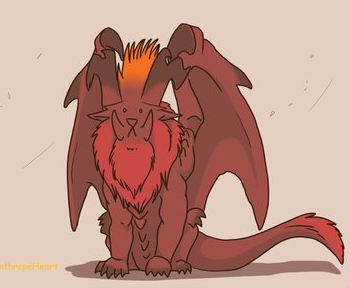I really hate that Windows does this. Which is why when I decide to switch a machine to Linux it’s the only OS allowed to boot to bare metal. Windows can go in a VM and suck it.
Not sure why, but your comment made me think about the first machine I switched to Linux. It was a laptop who’s fan eventually had a bad bearing and needed to be replaced. Luckily it was still under warranty, so I sent the laptop in to get the fan replaced, and received my laptop back with Windows installed on it… I was so livid.
Never send them the drive.
They are probably required to boot to the desktop for qa
Yup, exactly what they said. But I didn’t know any better at the time. These days I would just fix that myself rather than send it to them
Had something similar happen to me. Something unrelated to the OS or hard drive and they reformatted my drive and I lost everything. I was ballistic when I found that one out.
That pissed me off
Get a separate disk for windows and you can set up your windows VM to also optionally dual boot into it
What’s actually happening here is Windows is setting its bootloader first in your EFI when it gets updated. Linux isn’t gone, you just have to press the “boot another drive” button and boot to it, or go into your EFI setup and switch the bootloader back to the Linux one.
Linuxes do the same thing when updating their bootloader.
Note for the Ackshually crowd: If you’re still booting MBR (which comes with the partition eating risk on dual boots) you have a system that is older than Windows 8 - 11+ years old, so eating the MBR is something you’ll have to deal with unconventionally, as all modern systems, OS, and hardware expect you to be using EFI.
And this is why you should install windows to a docker container on your server and not let it touch anything else. Link to GitHub repo.
deleted by creator
In my case it wasn’t the boot entry being removed. It actually ate the partition. When installing Linux Mint, I resized the Windows partition in Linux. Then I noticed that Windows absolutely didn’t recognize that change, and thought its partition is still as big as it used to. Then on a restart it hit me with the “Repairing drive C:” which killed the Linux partition leaving just something corrupted.
“Repairing”Never happened to me. Like ever. And I’ve been on Linux (with occasional dual-booting whenever I’m in a position where I need windows–) for like 15 years now?
To be honest a lot of stuff people talk about seems to not happen to me and I think I might be exceedingly lucky or smth.
Same. Never happened to me either. But I usually make a sperate UEFI partition for Linux instead of relying on grub.
That is true for me now, but for years I used dual boot on old BIOS based systems so idk /shrug
That’s actually more safe. Windows can rewrite the UEFI setting to make itself the default again (although that’s of course easy to fix). But it can’t change your BIOS boot order.
When I booted into Windows 8.1 on my 2016 desktop computer, it immediately destroyed my boot loader for Ubuntu making it impossible to boot. I can’t confirm if it was BIOS or UEFI though. I had to use a convoluted technique to restore the boot loader for it to load Ubuntu afterwards each time I ran Windows.
Protip:
Just don’t have a live Windows partition.
This. I entirely understand that some people don’t have that option, but it’s worth reiterating that if you have a choice, you’re best off not to have partitions at all.
I run Mint on an 8-year-old Mac desktop machine with no partitions and it’s lightning-fast for everything I need it to do.
It’s also worth mentioning that I have said desktop machine because my wife is a pro photographer and Apple and Adobe have colluded for decades to create a kind of “planned obsolescence” whereby professional photographers are ostensibly locked out of the current industry standard unless they run a very recent version of Photoshop that by design isn’t compatible with hardware architecture that’s more than about 5-years-old.
Partitioning is good even if you’re just running Linux. Specifically separating your / from your /home/ – In case shit goes wrong you can nuke the OS side and keep all your files and shit. (also, mandatory for UEFI systems cuz you also need a /boot/efi partition)
Dual booting < having two separate SSD’s
They still need to share an EFI partition
If you don’t want to bother with the bootloader like the other comment mentioned you can also just use the boot menu from the motherboard instead. You gotta mash f11 (or whatever it is on your motherboard) on boot when you want to go into Windows, but if you only need it every once in a while it is good enough.
Never happened to me. Fedora had completely deleted Windows bootloader once though and didn’t even recognize the existence of Windows on install in the first place.








